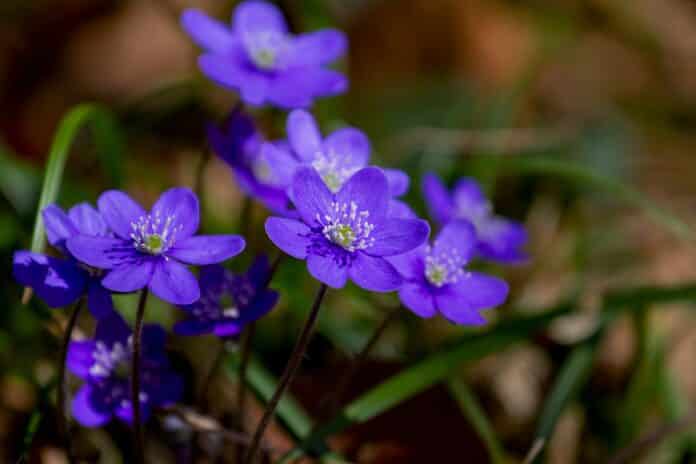February’s flower is the violet. It’s associated with spiritual wisdom, humility, and faithfulness. This month[s flower also includes the primrose which has connotations of courage and youthfulness.
This is the ideal time to complete projects you have put off. There is little of major consequence to plant, but lots to get ready for. (examples: Build a raised bed, set up rainwater harvesting, order seeds and bulbs and seedlings, amend soil in certain locations, order a yard of soil to spread in low places, weed and mulch beds that look like they need it, and generally get ready for the upcoming business of planting and growing that produces a beautiful yard)
POINSETTIAS Continue January care of keeping the plants in strong indirect sunlight and watering when the surface is dry. The experts say that you can fertilize every other week with half strength houseplant fertilizer, but I just fertilized the poinsettias when I fertilized my hanging baskets and pots and they all did fine. It will be April before you have to take any real action.
PLANT (but be prepared to protect if the weather turns very cold as it has done this year)*Amaryllis, caladium, dahlia, coleus, geranium, daylilies, gladiolas, hibiscus, lily, marigold, petunia, phlox, portulaca, roses, snapdragon, trees(including citrus) Plant Bluebonnet seedlings around Valentine’s Day.
* Beets, cantaloupe, cucumbers, okra, peppers, potatoes, radishes, tomatoes
*Some tender vegetables and ornamentals can be started in flats and containers for early season production
PRUNE Roses if there is any dead wood. Associate this with Valentine’s Day. Do not prune so closely that you start new growth. Prune chrysanthemums.
FERTILIZE Begin fertilizing existing plants mid month with 16-20-0. Fertilize fruit trees that were not fertilized in January.
TRANSPLANT those plants that need to be moved at this time.
HARVEST Continue harvesting winter green crops and root crops and citrus.
PEST Spray and dust as needed; be alert to fungus problems
WEATHER PROTECTION Keep plants in good conditioning by watering, but no watering enough to activate new growth. Keep an eye on the forecasts and be ready to protectas necessary if the weather turns cold.
POSSIBLE BLOOM Azaleas, camellias, geranium, gerbera daisies, hibiscus,nasturtium, pansies, pinks, poinsettia, snapdragons, sweetpeas, alyssum, and many other cool weather bloomers.
MULCH Check the condition of the mulch in your beds. It protects against extreme temperatures and conserves moisture.




